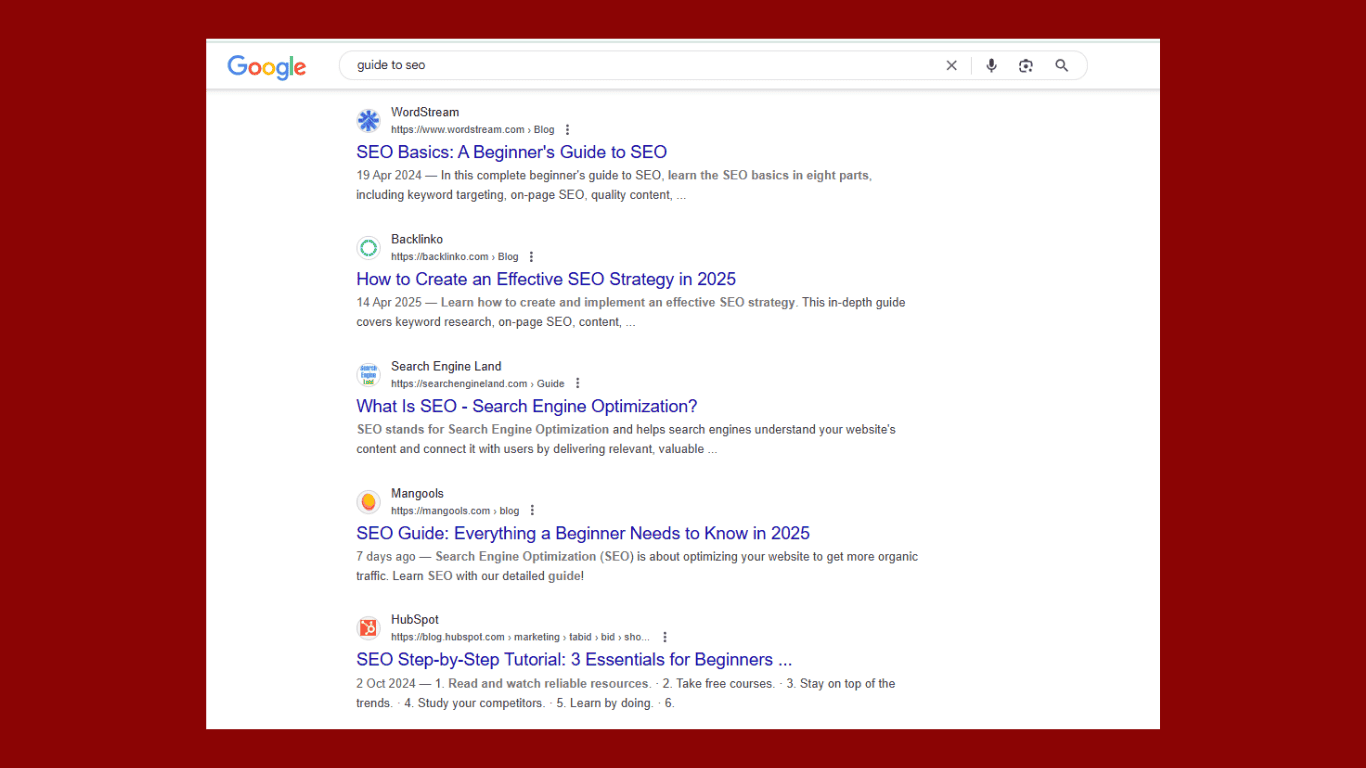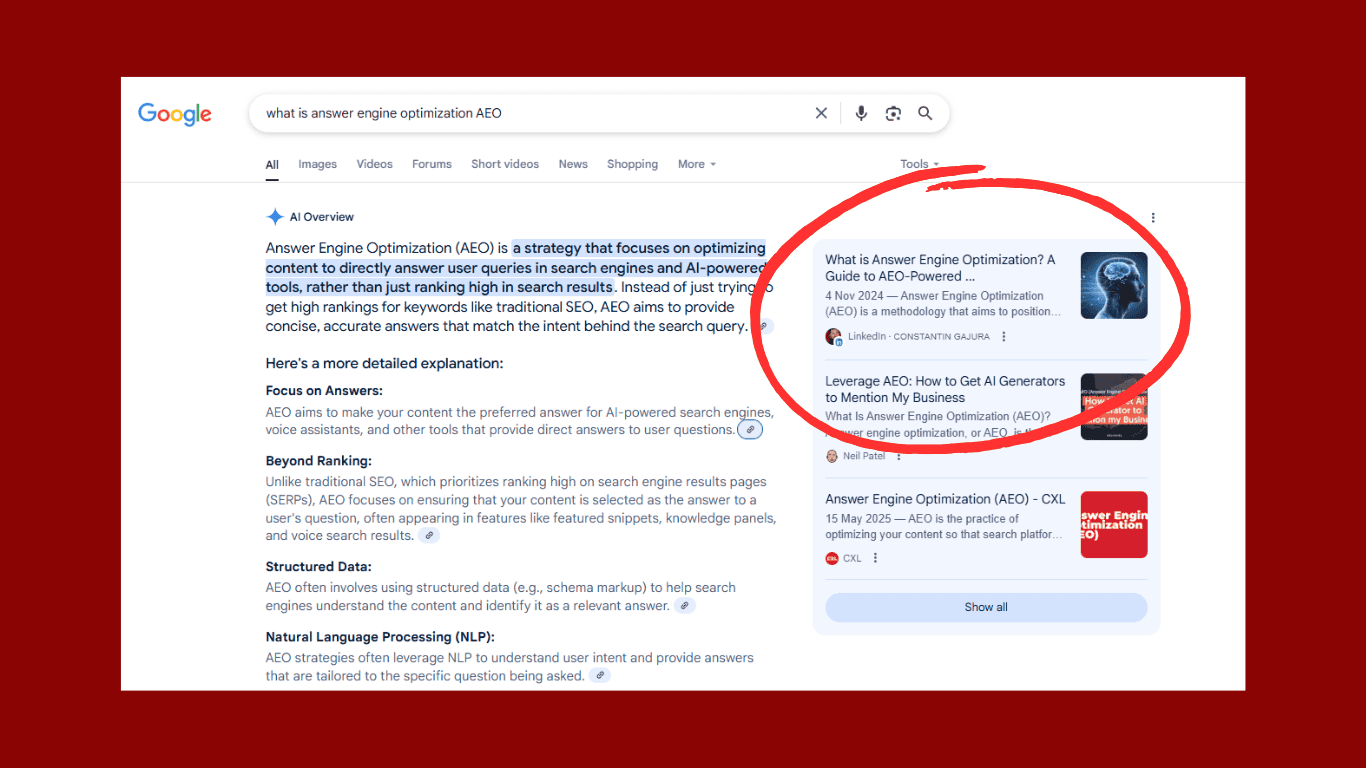Search optimization is entering a transformative era. What began as a focus on keyword rankings and backlinks has evolved into a more sophisticated, AI-aware approach. Today, users seek information that is quick, direct, and increasingly delivered by intelligent platforms. This shift has introduced Answer Engine Optimization (AEO) and Generative Engine Optimization (GEO) as strategic extensions of traditional SEO.
In Malaysia, leading SEO providers are already adapting by recognising that visibility today means optimising not just for human searchers, but for the AI engines that serve them.
A pivotal 2024 report by Gartner, forecasts that by 2026, traditional search engine volume will decline by 25%, with AI chatbots and virtual agents claiming a larger share of queries.
Generative AI is becoming a substitute answer engine, pushing digital marketing companies to rethink their marketing strategies.
The Evolution of Modern Search Engine Optimization
The transition from keyword-stuffed webpages to conversational AI interfaces marks a profound change in how information is accessed and delivered.
According to Datos (May 2024), Google still sees 290 times more searches than new AI platforms like Perplexity. Yet, nearly 60% of Google searches now end without a website click, showing a move toward zero-click and AI-generated answers, as Sparktoro found in 2024.
AI tools like ChatGPT and Google’s AI Overviews are driving this shift. By May 2025, ChatGPT recorded 5.24 billion visits, while AI-powered results now influence nearly half of Google searches.
This transformation signals a critical turning point for digital visibility strategies, requiring businesses to adapt across all three optimization approaches.
Understanding the Triple Pillars: SEO, AEO, and GEO
To remain competitive, businesses must understand and leverage the strengths of three complementary approaches: SEO, AEO, and GEO.
SEO: The Foundation of Digital Visibility

As search evolves from SEO toward AEO and GEO, it’s important to recognize the ongoing value of traditional SEO. At its core, SEO involves optimizing website content, structure, and technical elements to improve rankings on search engine results pages (SERPs).
Recent research analyzing 25,000 user searches found that websites ranking #1 on Google appears in AI search answers about 25% of the time. This shows that traditional SEO still plays an important role, even as AI-driven search evolves.
Traditional SEO elements now serve dual purposes:
| SEO Component | Traditional Role | Evolution for AEO/GEO |
| Keyword Research | Rankings focused | Intent and question-based |
| On-Page Optimization | Human readers | AI readability & structured data |
| Technical SEO | Crawlability | Machine learning compatibility |
| Link Building | Authority signals | Source credibility for AI |
Strong SEO practices now serve dual functions: improving rankings and helping AI understand, contextualize, and feature content in its generated outputs. For example, while meta tags once solely served search engines, they now help AI systems understand and categorize content for featured snippets and generated responses.
The key is not abandoning traditional SEO but leveraging it as a foundation for AEO and GEO strategies. Websites with strong SEO fundamentals are better positioned to succeed in AI-driven search environments.
Answer Engine Optimization (AEO)

Answer Engine Optimization (AEO) is about meeting the demand for quick, reliable answers.
It focuses on optimizing content to appear in featured snippets, FAQs, how-to guides, and concise responses and direct answers. Recent studies show that featured snippets and AI Overviews now appear in nearly half of all Google searches.
Key AEO elements and their Impact:
| SERP Feature | Primary Purpose | Implementation Strategy | Impact |
| Featured Snippets | Direct answers to queries | Structured, concise content | Appears above traditional rankings |
| People Also Ask | Related question coverage | FAQ-style formatting | Expands user engagement |
| Knowledge Panels | Brand information display | Schema markup implementation | Enhances brand visibility |
Implementation framework:
| Content Structure | Technical Optimization |
| Q&A format | FAQ schema markup |
| Direct responses | Voice search optimization |
| Step-by-step guides | Natural language processing |
| Structured data | Mobile-first formatting |
For businesses in competitive markets like Kuala Lumpur, AEO implementation acts like a digital librarian; It instantly delivers accurate information in user-preferred formats. This approach helps capture the growing segment of users seeking immediate, direct answers.
Generative Engine Optimization (GEO)

GEO focuses on optimizing content for AI-powered search engines like ChatGPT, Google AI Overviews, Perplexity, and Claude—shifting from traditional search rankings to AI-driven answers.
How GEO differs from traditional search:
| Aspect | Traditional Search | GEO |
| User Journey | Click-through to websites | Direct answers within AI chat or summary |
| Visibility Method | Page rankings | Knowledge base inclusion |
| Content Priority | Keywords and links | Factual accuracy and citability |
| User Experience | Multiple-click exploration | Conversational, instant responses |
Recent data from Semrush reveals that AI Overviews now appear in 13.14% of Google queries as of March 2025, doubling from 6.49% in January 2025. With 1.5 billion users regularly engaging with Google’s AI Overviews, GEO is quickly becoming a core pillar of digital visibility.
Implications:
| Impact Area | Current Trend | Strategic Response |
| Organic Traffic | Reduced website clicks | Optimize for AI snippets |
| Content Visibility | AI summaries dominate top results | Focus on authoritative content |
| User Behavior | Preference for instant answers | Adapt content structure |
Real-world impact:
| Business Impact | Example |
| Visibility Shift | E-commerce product pages now compete with AI product summaries |
| Traffic Patterns | News websites see 30% reduction in clicks due to AI summaries |
| Adaptation Strategy | Recipe sites restructuring content for AI snippet inclusion |
This transformation in search behavior requires businesses to rethink their digital presence while maintaining traditional SEO practices.
Successful GEO implementation relies on three key elements: factual accuracy through verified information, content citability from authoritative positioning, and machine readability through structured formatting. These elements ensure content is both discoverable and trustworthy in AI-generated responses.
SEO vs AEO vs GEO: A Comparative Overview
| Aspect | SEO | GEO | AEO |
| Goal | Rank higher in traditional SERPs | Appear in generative answer boxes and summaries across search engines, AI assistants, chatbots, voice assistants, and smart platforms. | Provide direct, concise answers |
| Focus | Keywords, content quality, backlinks | Conversational tone, semantic enrichment | Structured answers, FAQ, schema |
| Optimized For | Google, Bing, and other search engines | Generative engines and platforms such as Google AI Overviews, Bing Copilot, ChatGPT, Gemini, Perplexity, Claude, and other AI assistants | Featured snippets and voice search |
| Content Style | Informative, well-researched articles | Natural language, updated and factual | Direct Q&A, lists, concise summaries |
| Key Ranking Factors | On-page SEO, backlinks, page speed, mobile responsiveness | Featured snippets, schema markup, voice search optimization | AI-friendly structure, conversational tone, E-E-A-T compliance |
Creating a Unified Approach for Search Optimization Strategy
If traditional search is shifting from driving traffic to delivering answers, how can brands still win? The solution lies in unifying SEO, AEO, and GEO into a single strategy that’s responsive to today’s user expectations and technologies.
Strategic priorities:
| Strategy Component | Priority Level | Implementation Focus |
| Technical SEO | High | Site structure, speed, mobile optimization |
| Content Quality | Critical | E-E-A-T compliance, semantic depth, accuracy |
| AEO Elements | High | Featured snippet optimization, Schema Markup, direct Q&A formatting |
| GEO Requirements | Essential | AI-friendly language, structured citations, context |
Future-Proofing Your Digital Visibility

AI is not replacing SEO, but it’s expanding the rules. The rise of AEO and GEO represents a broader redefinition of how visibility is earned online. Businesses that integrate all three pillars will be best positioned to thrive in a world where search is not just queried, but answered and summarised by machines.
Ready to optimize your digital presence for both traditional search and AI-driven platforms? Book your free consultation here today.

